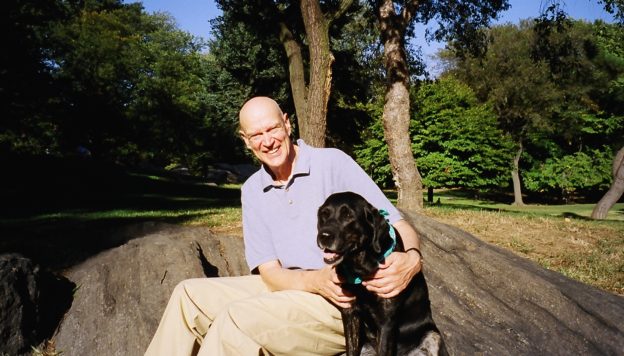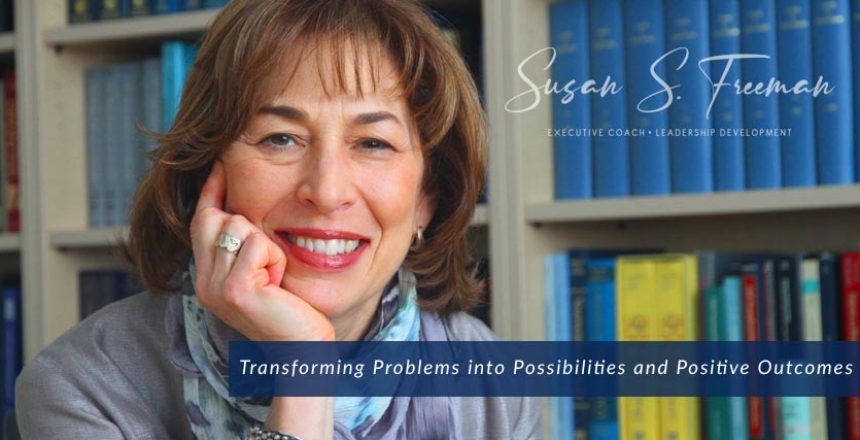
I’ve chosen to feature an entire post borrowed from Willie Pieterson, Professor of Management at Columbia Business School and former CEO of several multibillion dollar businesses. The six lessons abound with insightful, focused wisdom for leaders. Consider this as you make an inventory of what’s made your year as a leader effective…
“Margaret Wheatley, the complexity theorist, once wrote: “You cannot change a living thing from the outside. You can only disturb it so it changes itself.” Leadership development, then, is largely about how we learn and grow in response to the disturbances or stimuli that life offers us.
These “disturbances” can come from many sources: teachers, role models, or the study of nature, for example. But for me, a profound set of lessons came from an unexpected source: my black labrador, Maisie.
For 14 years, Maisie and I walked the path of life together. From the start we were seldom apart, developing a deep bond and learning to understand each other’s moods, needs, and expectations. Over the years, my relationship with Maisie revealed to me some of the most important lessons about life and leadership.
The Real Meaning of Transparency
In the business world, we emphasize how important it is for companies and their leaders to be “transparent.” To clarify this buzzword we come up with sophisticated definitions of what it actually means, from the rules for “full disclosure” in financial statements to simple calls for honesty in our dealings with others.
But if you want to understand what true transparency looks like, just observe a dog.
Day in and day out, Maisie unreservedly revealed her mood and feelings — whether joy, fear, pain, hunger, playfulness, or just the need for a walk. No pretenses, no vanity, no ulterior motives, no defensiveness, no fear of being judged, just plain honesty and, most important of all, humility. I can’t think of a better transparency checklist for business leaders.
Living in the Moment
Seneca, the Roman philosopher and statesman, counseled that “the greatest obstacle to living is expectancy, which hangs upon tomorrow and loses today. You are arranging what lies in Fortune’s control and abandoning what lies in yours.”
Logic tells us this is true. Yet how hard it is for us humans to live in the “here and now.” We pride ourselves on our ability to interpret the past and contemplate the future, but in the process we too often forsake the present. It is always instructive to hear the stories of people who have been through a near-death experience. It jolts them into experiencing the rest of their lives in the present tense, and they tell us how transformative this has been.
Other animals are often wiser than we are. Maisie was a daily reminder of what it means to live in the moment, to experience life as it unfolds. If I could have asked her, “Maisie, what time is it?” she would have answered, “The time is now.” Ah, yes, of course it is ….
The Power of Encouragement
Maisie loved to learn new things. To add to her repertoire I began working with a dog trainer, but at a certain point the trainer said, “You are Maisie’s mentor. You should take over the training now. It’s part of your relationship with her.”
Feeling unprepared, I sought the trainer’s advice. “What’s the key to training a dog well? Repetition, discipline, lots of rewards?” She replied, “Yes, all of those. But you have left out the biggest one: encouragement. Give her a sense of achievement by setting manageable tasks; praise her when she succeeds; restore her confidence when she fails and help her try again; never let her lose her dignity.”
That lesson in dog training was a real epiphany. My attitude to that point had been rather condescending, thinking that Maisie could only learn by rote, that belief in herself didn’t matter. I had forgotten the most important task of a leader — to help others overcome self-doubt and realize their best selves. The revelation was to see what a big difference encouraging the spirit makes, as much in the canine species as in the human one.
The Importance of Enthusiasm
I don’t think there is a more consequential attribute than enthusiasm. It literally changes our chemistry, drives us forward, helps us overcome hurdles, and inspires cooperation in others.
My daily “dose” of enthusiasm came from Maisie. She responded to both small and big things with the same zest and joy — whether it was a car ride, a new toy, a visit from a friend, or our early morning walks in Central Park. Seeing her in full flight was a wondrous, uplifting sight. Whatever she was doing, she was all in, fully committed.
When I would get back to my office to start the work day, with Maisie resting at my feet, I was infused with positive energy. Everything felt brighter and more hopeful. Life was good.
There is a message here for leaders everywhere: pause to find joy in small things as well as large — the whole parade of life. No half measures. The magic of enthusiasm is that it’s infectious.
Communicating without Words
Maisie mastered an impressive array of commands. However, most of our communication was non-verbal. Any dog owner will recognize the behavior of a dog upon seeing a suitcase — tail between the legs, head bowed, shadowing one around the house. The disappointment is clearly expressed. The message: “Please don’t leave me.”
As I was a regular traveler, this was a common occurrence. To spare Maisie from prolonged disappointment I attempted to conceal my travel. But even without any concrete evidence she would sense my impending departures. I never figured out what triggered this, but one way or another, Maisie got the message intuitively.
The best leaders recognize the importance of effective communication, and that the key to this is listening well. But words are inefficient, and humans often use them to shield their real feelings. Maisie reminded me that the high art of listening is the ability to hear what is not being said, but being felt.
The Ultimate Test of Trust
The gurus tell us that effective leadership is based on trust. This is undeniably true. But how do we gauge trust?
My time with Maisie made me think of trust in new ways. In important respects we depended on each other, enriched each other’s lives. But clearly she was the more vulnerable partner — to mistreatment or neglect, for example. I realized that the ultimate test of trust is how we treat those who rely on us, but have no means of retaliation when we fail them. The abuse of power is the biggest breach of all.
All this came into sharp and wrenching focus on a sunny April day, when I took Maisie out for a gentle walk. Old age had long since begun to ravage her, but wanting to hold on to her, we kept putting off the awful moment. Midway through our walk she stumbled and glanced up at me, and those wise brown eyes conveyed a message: “I think it’s time.” Maisie trusted me to understand when her time was up, and to be with her when the end came.
As each of us considers our own avenues of growth, we come back to Margaret Wheatley’s insight. We tend to think of leadership as being conferred by a formal appointment to a position of authority. But leadership development, she reminds us, must be self-generated. Our task is to search for the stimuli to light the way. We enrich our insights when we turn our lens on a wider field. What can we learn about leadership from laborers, artists, scientists, and adventurers? From our fellow creatures? To my surprise and delight, I found a number of rich, and sometimes humbling, insights from my cross-species relationship with Maisie.”
I invite you to post your comments here.

